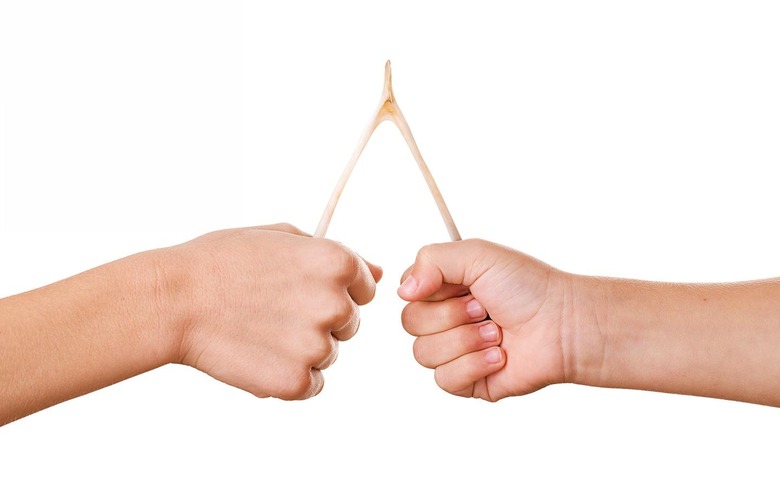What Exactly IS A Wishbone, Anyway?
When you think about it, one of the odder Thanksgiving traditions is the breaking of the wishbone. The V-shaped bone is carefully cut out of the turkey's neck area, it's dried out in the oven, then two kids grab a side each and tug. Whoever get the larger half will have his or her wish granted. But what's the deal with this tradition? And what exactly does the wishbone do?
The wishbone, which is actually called the furcula, has had superstitions surrounding it since at least the 1400s, when goose wishbones were used to divine whether the winter would be wet, dry, cold, or mild. The custom of two people tugging the bone has been around since the 1600s, when the bone was referred to as the "merrythought." These superstitions were most likely started because the bone has such a unique shape, and it's in a front-and-center position on the bird.
But what is the function of the wishbone? Think of it as two collarbones, fused together over millions of years of evolution. The furcula primarily functions as a support for bones, muscles, and tendons. It also acts like a spring for the wings, expanding as they're pulled down and snapping back when they're raised (try to bend it before it's been dried out and you'll see how flexible it is). It's also thought that the furcular works to pump air through their air sacs.
So while your kids are fighting over who gets to snap the wishbone this holiday season, maybe you can use it as an opportunity to let them know that it's actually called the furcula, and that it strengthens the thoracic skeleton to assist with flight. Or not — up to you.
